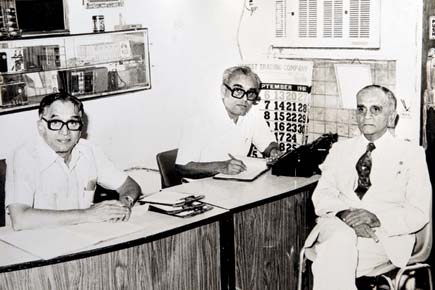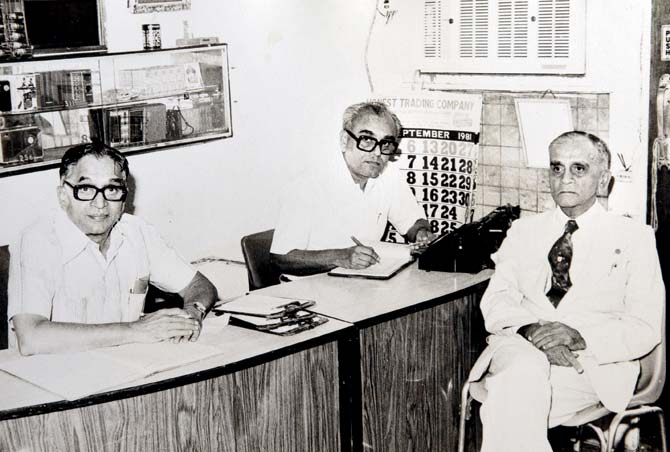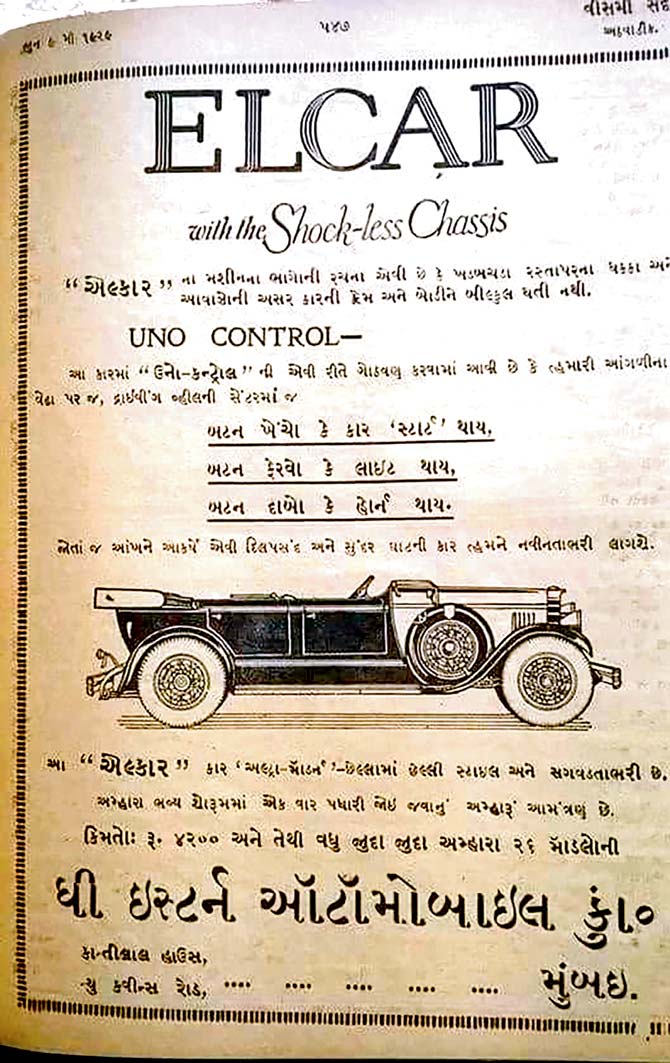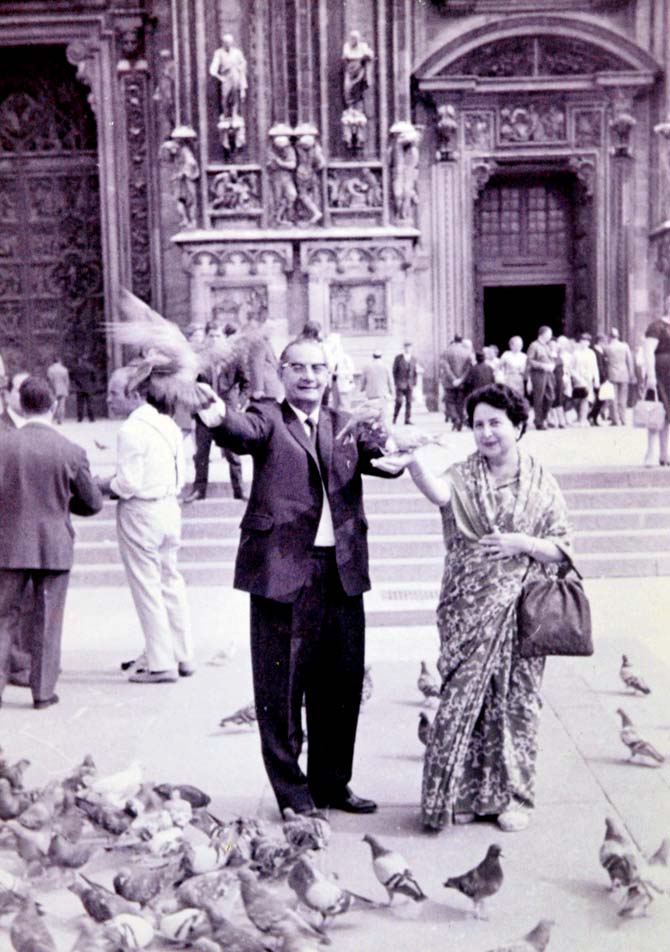Treading the path of New Queen’s Road where the curtain rises again today, after 20 years, on the country’s sole surviving opera house


Bharat Tewari, from the third generation of famous sweets sellers, outside the Tewari Bros shop facing Royal Opera House. Pic/Suresh Karkera
 He was everybody’s heartthrob. Ten years after Deewar notched cult status, I too happily interviewed Shashi Kapoor, in the car from his Harkness Road residence to Film City, Goregaon. Flashing that trademark crooked-toothed grin, he said, “Before Mr Yash Chopra’s movie, I’d acted in another Deewar as an eight-year-old.”
He was everybody’s heartthrob. Ten years after Deewar notched cult status, I too happily interviewed Shashi Kapoor, in the car from his Harkness Road residence to Film City, Goregaon. Flashing that trademark crooked-toothed grin, he said, “Before Mr Yash Chopra’s movie, I’d acted in another Deewar as an eight-year-old.”
ADVERTISEMENT

At the 1934-established Philips dealership Jamnadas Rutonsi store (left to right): Dhirshi Jamnadas, Ajit Rutonsi and Jamnadas Rutonsi. Pic/courtesy Dipika Asher
That was at the Royal Opera House, in Prithvi Theatres’ stage production, Deewar, premiering on August 9, 1947, a week before the country woke to momentous freedom at midnight. Three months earlier, radio thespian Ameen Sayani had seen Pathan, with Shashi as Bahadur Khan, a nationalist Muslim’s son. Not forgetting the charmer’s appearance in a crowd scene, at all of age 6, in Shakuntala, the first Prithvi play here on March 9, 1945.

The Eastern Automobile Company showroom ad for a new car in a Gujarati paper of 1929. “Uno Control” offers three functions at the press of a button: the car starts, its light switches on and the horn sounds. Pic/courtesy Sanatan Bhatt
Besides Prithviraj Kapoor’s legendary opuses, Opera House rang with Natya Sangeet dramas, Parsi theatre and movie nights redolent of glamour and gimmicks. V Shantaram’s Dahej opened in 1950 with a cut-out of actress Jayashree on the road outside, replete with an elaborate mechanically powered veil. Star-struck patrons crunched pistachios and almonds, sold as four-anna packets during the intermission.

AC Patel and his wife Khorshed feeding pigeons at the Duomo Cathedral, Milan, in 1966. Pic/courtesy Kashmira Master Jethwa
Escorting me on New Queen’s Road (whoever refers to it as Mama Parmanand Marg?) is Pradip Zaveri, eldest scion of Pransukhlal Zaveri. He smiles indulgently when I tell him my husband and I exchanged wedding bands made to measure at their eponymous 1965-established store. Next door, Panchratna building buzzed with the diamond bourse operations till it shifted to Bandra-Kurla Complex.
This is traditional turf for glitter. By 1800, craftsmen in Fort relocated to Opera House, prosperous goldsmiths second in number to tailors. Years on, the Akshay Kumar flick, Special 26, echoed a real-life heist at Tribhovandas Bhimji Zaveri here in 1987. A daredevil imposter, claiming to be an income tax officer, masterminded a perfect crime shocking the police and public alike.
If my street guide’s shop address is 7, New Queen’s Road, his home is a precious stone’s throw away at 5, New Queen’s Road. It actually has the words Queen’s Diamond carved on its gatepost. Up in his apartment, Zaveri points to Chowpatty beach below and says, “When Nehru’s speech swayed crowds there in the Samyukta Maharashtra agitation, black flags were waved and cops released tear gas. The smoke forced us to close windows.”
That was the 1950s. The spirit of sacrifice this street is steeped in trails to the critical 1940s. “Patriotic theatre was delicious,” declares Sayani. “We loved performances based on pre-Independence events. Pocket money days meant going to Opera House’s upper seats, elevated from the stalls. Wherever we sat it was fascinating. Amy Moos, our New Era schoolteacher, hid workers of the underground movement like Achyut Patwardhan and Aruna Asaf Ali. Bringing them to our Kemps Corner home for lunch or dinner, she exhorted us never to reveal their presence.”
The Royal Opera House presents a fine baroque facade. Rowed stately beside it, Unity Building, Kantilal House and Parekh House stand dressed in Renaissance Revival-style architecture. Exterior elements carved on balconies and window lintels typify those found in the landlords’ hometowns in Gujarat. At Parekh & Parekh Medical Centre in 102-year-old Parekh House, I hear another freedom fighter family story from Sushilaben behind the counter. Her great-grandfather-in-law, Sir Gokuldas Kandas Parekh, from Umreth in Anand, studied law and pitched in with Gandhiji, Nehru and Sardar Patel, regulars at their flat above. Two marble steps inside the shop are telltale signs of horse buggies once tethered for audiences riding to Royal Opera House, in carriages drawn by Arab steeds stabled on the road right up to the Charni Road railway lines. Easy to imagine the theatre’s grand frontage designed for decorated Victorias to clop through.
Exactly such a pair of steps greets us next door at Jamnadas Rutonsi, Philips dealers. Possibly the oldest shop in Opera House to roll up shutters daily, the visiting card of Dipika Asher, the illustrious proprietor’s daughter, has ‘Serving since 1934’ printed on it. Of Kutch Mandvi lineage (the family of Jamnadas’s father, Rutonsi, owned Worli Hill after tasting success in the Mulji Jetha cloth market), ‘Jamubhai’ struck out with different determination. Mixing business with the pleasure of music, he turned entrepreneurial at just 17. It was the 1930s, with radio gaining ground. Jamnadas branded the first Philips wireless set MW 2510. “He was honest and hardworking,” Asher says. “Those qualities have kept this firm going.” Her mother Menaben often helped at the shop — “with my father hesitant to claim dues, she maintained a record sending clients polite but firm reminders.”
Roxy Cinema, across the road from Jamnadas, used to be known as Wellington Opera. Bought in 1932 by Kapurchand, Kevalchand and Zaverchand Mehta (lending their names to Kapur Mahal, Keval Mahal and Zaver Mahal on Marine Drive), it offered India’s first talkie release, Alam Ara. Screen history was rewritten in 1943 when the Ashok Kumar blockbuster Kismet enjoyed a six-year trot at Roxy. Soon, though, Rajesh Khanna dethroned superstar competition with romantic classics from Aradhana to Amar Prem soaring to jubilees on Roxy’s neon-lit billboards.
Twentieth-century screen and stage entertainment evolved in sync with urban planning. Between 1906 and 1908, city improvement schemes paved new Hughes Road and Mathew Road as welcome routes linking Malabar and Cumballa hills. Mathew Road created a fresh connection for Sandhurst Road to Queen’s Road, introducing a small estate for development behind the opera house, parallel to the train tracks. Dr Nitin Narvekar, explains the basement of Patel Chambers, where his gynaecological clinic is located, extends 100 metres below Sandhurst Bridge to emerge at Mathew Road. A winding warren of nursing homes and pathology labs share walls with stockists of automobile spares and accessories. Showrooms of American cars were popular fixtures — the Standard Chartered Bank at Shree Pant Bhuvan retains a slope indicative of such a space.
Totally savouring the clamour and clutter of her street from Kantilal House is pop artist Jenny Bhatt. Three generations of Bhatts have lived in the nearly century-old building since 1942. Presently painted rose pink, its wooden staircases and Minton tiles (now rudely replaced with granite) were appreciated by framers and gallery curators preferring to climb rather than step into the elevator. Opera House and Roxy showed films distributed by Prakash Pictures, helmed by her grandfather, director-producer Vijay Bhatt. His producer brother Shankarbhai discovered Meena Kumari and Manoj Kumar.
Bhatt misses Woodlands restaurant next to Roxy, as well as a paanwala in the Gardi Mansion compound, brimming with gossip gleaned from his customers who were mainly diamond merchants and real estate brokers — “He was our CCTV, aware of who went in and out of each building.” She also has a fond memory of a cat delivering her litter in the biscuit box of the neighbourhood Irani cafe. “Kittens looked sweet in the glass case, furry balls curled up against their mother who is still around.”
Comfortably entrenched on this Gujarati-centric strip is Tewari Bros, the veteran sweets seller of Calcutta for 75 years. With a quartet of citywide branches, this shop has reigned at its landmark corner from 1988. It is festive Navratri and colourful delicacies like sandesh and samosas seem to simply fly off their shelves. I ask S K Tewari if he and son Bharat find fewer takers for ghee-fried mithai and namkeen farsan in health-conscious times. “Not at all,” is the answer.
Touche, I think. And reach into my purse to pay for kaju katlis with a sheen winking wickedly at a weight-obsessed world.
Author-publisher Meher Marfatia writes fortnightly on everything that makes her love Mumbai and adore Bombay. You can reach her at mehermarfatia@gmail.com
 Subscribe today by clicking the link and stay updated with the latest news!" Click here!
Subscribe today by clicking the link and stay updated with the latest news!" Click here!







